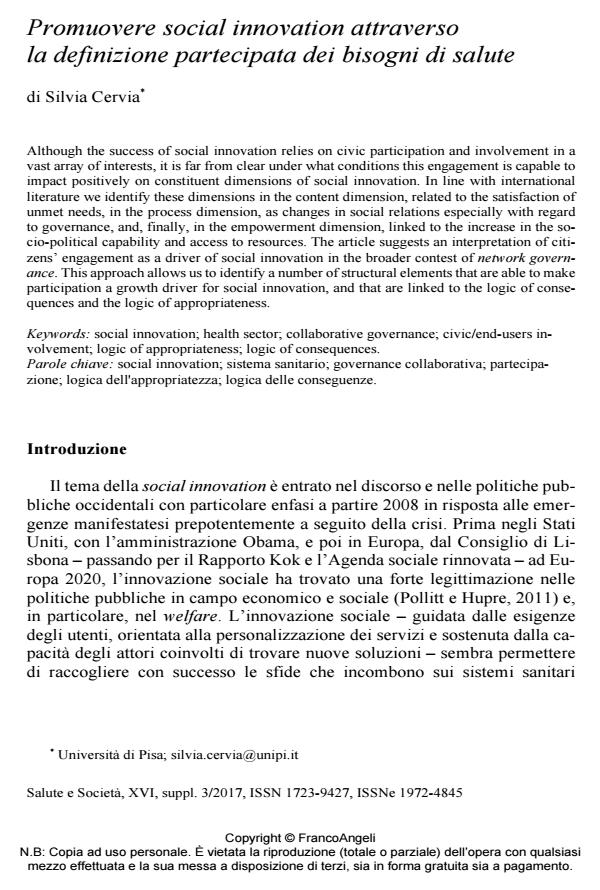Promuovere social innovation attraverso la definizione partecipata dei bisogni di salute
Titolo Rivista SALUTE E SOCIETÀ
Autori/Curatori Silvia Cervia
Anno di pubblicazione 2017 Fascicolo 2017/3-Suppl.
Lingua Italiano Numero pagine 17 P. 101-117 Dimensione file 108 KB
DOI 10.3280/SES2017-SU3007
Il DOI è il codice a barre della proprietà intellettuale: per saperne di più
clicca qui
Qui sotto puoi vedere in anteprima la prima pagina di questo articolo.
Se questo articolo ti interessa, lo puoi acquistare (e scaricare in formato pdf) seguendo le facili indicazioni per acquistare il download credit. Acquista Download Credits per scaricare questo Articolo in formato PDF

FrancoAngeli è membro della Publishers International Linking Association, Inc (PILA)associazione indipendente e non profit per facilitare (attraverso i servizi tecnologici implementati da CrossRef.org) l’accesso degli studiosi ai contenuti digitali nelle pubblicazioni professionali e scientifiche
Although the success of social innovation relies on civic participation and involvement in a vast array of interests, it is far from clear under what conditions this engagement is capable to impact positively on constituent dimensions of social innovation. In line with international literature we identify these dimensions in the content dimension, related to the satisfaction of unmet needs, in the process dimension, as changes in social relations especially with regard to governance, and, finally, in the empowerment dimension, linked to the increase in the socio-political capability and access to resources. The article suggests an interpretation of citizens’ engagement as a driver of social innovation in the broader contest of network governance. This approach allows us to identify a number of structural elements that are able to make participation a growth driver for social innovation, and that are linked to the logic of consequences and the logic of appropriateness.
Parole chiave:Social innovation; sistema sanitario; governance collaborativa; partecipazione; logica dell'appropriatezza; logica delle conseguenze.
Silvia Cervia, Promuovere social innovation attraverso la definizione partecipata dei bisogni di salute in "SALUTE E SOCIETÀ" 3-Suppl./2017, pp 101-117, DOI: 10.3280/SES2017-SU3007